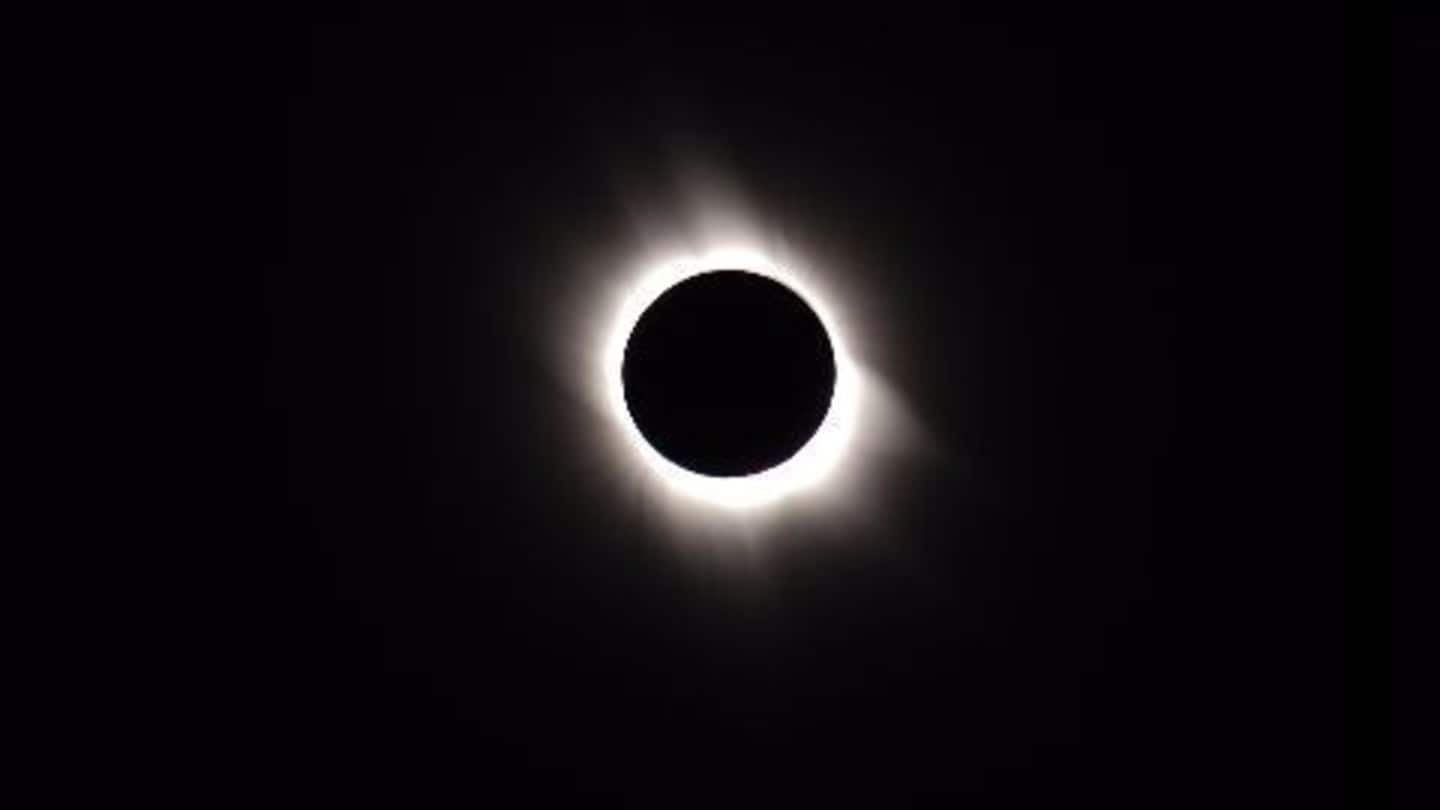
Total solar eclipse in Asia and Pacific
What's the story
Millions of people across Indonesia and the Pacific experienced a total solar eclipse, with parts of the region falling into complete darkness. The eclipse was total in Indonesia and the Central Pacific, while parts of Australia and Asia experienced a partial one. The total eclipse began at 00:15 GMT, with the moment of maximum shadow at 01:59 GMT.
Solar Eclipse
What is a solar eclipse?
A solar eclipse occurs when the moon gets between Earth and the sun, and the moon casts a shadow over Earth. Solar eclipses only occur during a new moon cycle. There are four types of solar eclipses, partial, annular, total and hybrid. Partial and annular eclipses don't cover the moon fully, and hybrid eclipses occur when an annular eclipse becomes a total eclipse.
Do you know?
Solar eclipses: Frequency
On an average, a century sees about 240 solar eclipses and about 150 lunar eclipses. Most calendar years have a minimum of 4 eclipses of which at least 2 are solar eclipses. The next solar eclipse is expected to be an annular one on 1 September 2016.
Visibility
Where was the eclipse visible?
People along a 150km wide strip running through Sumatra, Borneo and Sulawesi experienced the eclipse for about four hours. In Maba, Maluku Islands, there was darkness for about three minutes - the longest time in Indonesia. Sky watchers in southern China, south-east Asia, Australia, Hawaii and Alaska experienced a partial eclipse. For people outside these areas, astronomy institutes provided live streams of the event.
Information
A celestial fluke
The moon is the perfect distance away and the perfect size to create a total solar eclipse on earth. However, it drifts away from the earth at a rate of 4cm per year so this condition may not be visible in the distant future.
Scientists
How does the eclipse help science?
Scientists across the world use solar eclipses as crucial events to study solar physics. Astrophysicists use polarization cameras to capture exposures of the Sun to collect data on the innermost parts of the sun's volatile, superheated atmosphere. This region can only be observed during total solar eclipses when the Sun's bright face is completely blocked by the Moon.